An incubator of fresh ideas, Venture Lab Silicon Valley (VLSV) links start-ups in the United States with a high-tech ceramics producer in Japan. Founded in 1936, the innovative facility’s parent company, the Nagoya-based NGK Spark Plug Co., is a leading manufacturer of vehicular spark plugs utilizing ceramic material. But when the arrival of electric cars signaled a slowdown in spark plug use, NGK began re-tooling their ceramics products for medicine, energy, and other industries. Keen to explore business opportunities with cutting-edge entrepreneurs, NGK hired Hakuhodo, an advertising agency, who, together with its production arm Hakuhodo Product’s, organized a team to create a brand experience for the company through spatial design. They recommended two Tokyo firms, Katagiri Architecture+Design and Kakizoe Architects, to help develop the concept and design for headquarters of its new subsidiary in Tokyo and Silicon Valley.
VLSV occupies an 8,600-square-foot space on the fourth floor of a 12-story office building in Santa Clara, California, where parent company NGK Spark Plug has offices. The project’s L-shaped plan is loosely divided into a linear sequence of function zones. Moving from presentation to work sections, it starts with a reception lobby that opens onto the “Ice Break” area, where visitors meet VLSV staff before moving to the Exhibition Space. This gallery leads to the Collaboration Lounge, followed by a meeting space, mini-kitchen, glass-enclosed workshop, and workstations for visiting collaborators. A large conference room is tucked behind the Ice Break and lobby.
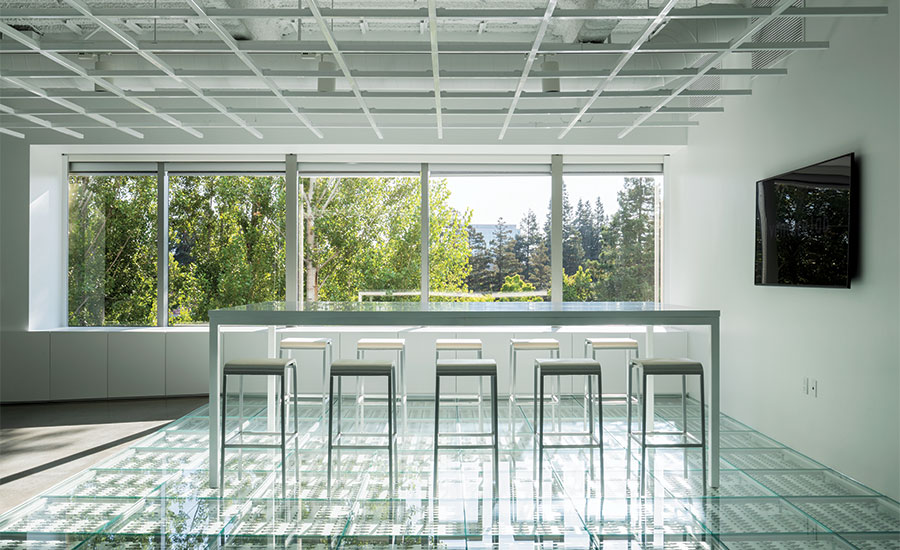
1
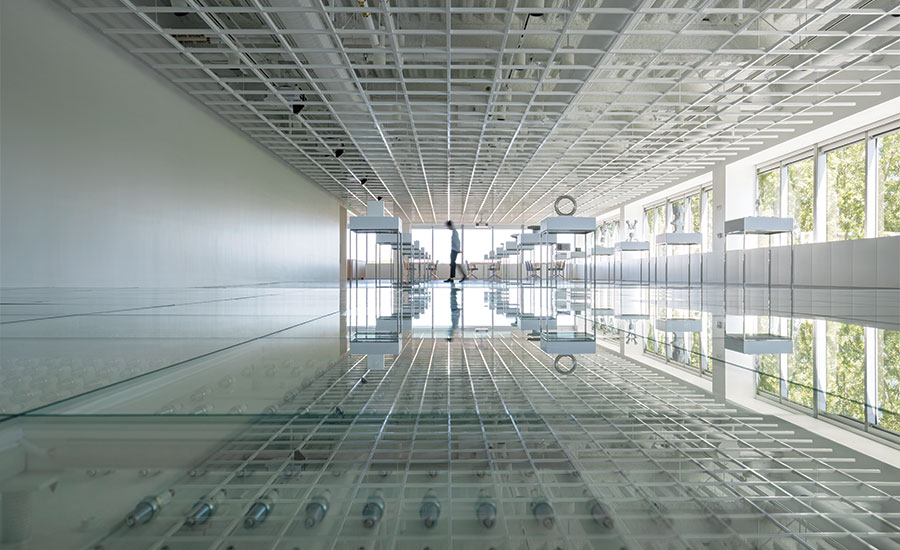
2
In the "Ice Break" meeting area (1), a custom table stands on a raised glass floor. While spark plugs are visible below, the gallery exhibits (2) fan out in front. Photos © Anna Nagai, click to enlarge.
While the exhibits familiarize visitors with the company’s capabilities, the work areas enable the development of joint projects from idea to prototype. This functional division is underscored by the architectural interventions. The design team stripped out the existing partitions, 9-foot-high ceilings, and carpet tile. Next they overlaid the raw space with a grid, an organizational device inspired by an archeological surveying technique for precisely documenting objects in situ. Guided by this framework, the architects inserted minimal elements that would not detract from the presentation of the client’s technology.
Comprising 2-foot by 2-foot frames, the white-metal grid hovers above the Ice Break, Exhibition Space, and Collaboration Lounge that occupy the project’s east-facing wing. This open framework reveals the mechanicals. It also allowed the architects to arrange lighting and projection equipment above the space while giving it a sense of height. Reflected in the polished concrete floor, the grid’s geometry is implicit in the alignment of the gallery’s 18 2-foot-square solid-surface and mirror-finished steel display tables. These showcase various applications of the client’s diverse ceramic products and incorporate augmented reality (AR) 3-D content that enables visitors to visualize NGK Spark Plug’s technologies at a microscopic level. The architects then inserted a second grid beneath the Ice Break meeting area. Supporting a triple-glazed raised floor above a 10-inch deep cavity, its matrix frames 10,000 spark plugs encased below it and illuminated by discreet LEDs—a polite bow to the company’s legacy.
Ringed with windows and views of the greenery outside, VLSV is filled with daylight. But the presence of nature can be masked by blackout blinds when the displays and lighting system are activated. In the Exhibition Space, low-intensity luminaires with wide cones provide ambient lighting, while high-intensity spotlights with narrow cones are positioned above each display. A custom-programmed audiovisual master control system manages the lighting, projectors, and AR content with a tablet, enabling staff to adjust the atmosphere and highlight exhibits relevant to individual visitors. This sophisticated system also enables the display of the AR 3-D content—as well as screenings of virtual factory visits—on the room’s 56-foot-wide projection wall, a way to showcase for visitors the NGK Spark Plug’s ability to mass-produce high-quality products.
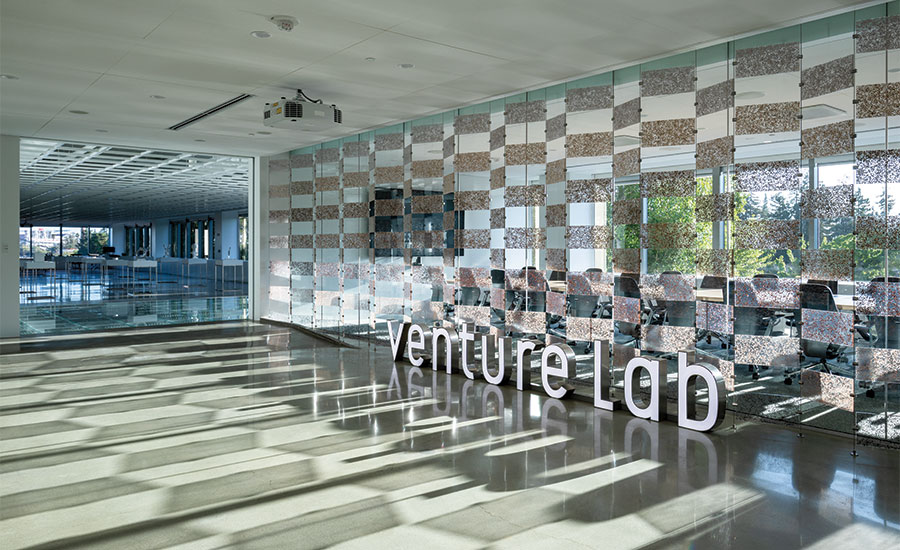
Interspersed with openings, the 8-inch by 16-inch resin panels that make up the lobby screen enable sunlight to activate the room. Photo © Anna Nagai
Like traditional Japanese devices writ large, screens are also used as space dividers. In the lobby, a folded 36-foot-wide checkerboard-like expanse forms the backdrop for VLSV’s backlit logo. Filtering sunlight from the windows beyond into the interior space, this semitransparent surface is made of 182 clear-resin rectangles containing gradations of pebbles that symbolize the earth’s strata. “It’s a visual representation of where ceramic material comes from,” explains architect Masaki Kakizoe. Fixed but frameless, the ⅜-inch-thick panels are secured with metal clips and cables. Abutting this partition, a wall that doubles as another viewing surface for videos slides aside like a movable fusuma panel to dramatically reveal the exhibits beyond. By contrast, basic glass partitions and placement of furnishings (mainly ready-made) loosely separate work areas.
Having an ocean between studio and jobsite is never easy. But working remotely comes naturally to Katagiri and Kakizoe, who collaborated closely as project architects on Kengo Kuma’s V&A Dundee, in Scotland, before launching their respective Tokyo practices. “What can be done in different countries is an interesting challenge for us,” says Kakizoe. In addition to sparking their creativity in Santa Clara, this outlook is a jump-start on the COVID-induced, Zoom-fueled practice style being required of architects globally.
Click plan to enlarge
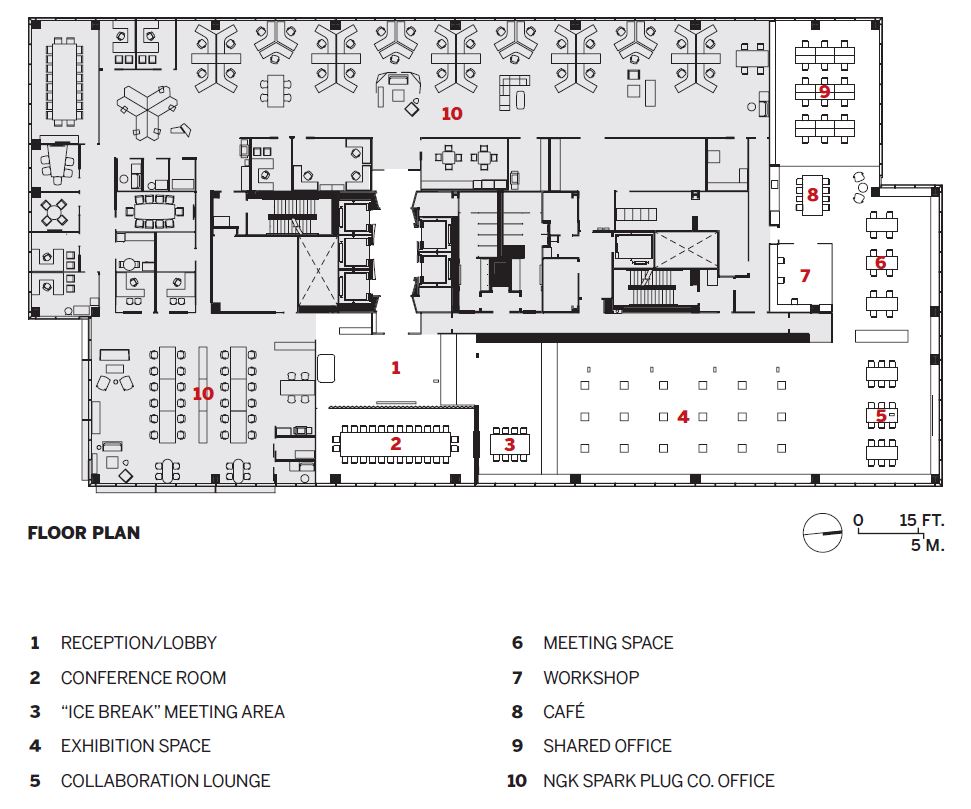
Credits
Architects:
Katagiri Architecture+Design — Kazuya Katagiri, design architect. Kakizoe Architects — Masaki Kakizoe, design architect
Creative Direction:
Hakuhodo Product′s — Takusei Kajitani, creative producer
Engineers:
LPA (structural/lighting design/architect of record); GT Jordan (electrical); AGC Mechanical Process & Piping Contractors (mechanical); Pappa Piping (plumbing)
General Contractor:
Core Group
Consultants:
Hakuhodo (project management); Sugio Lighting Office (lighting); Ray Corporation, Wow (visual/AR); BENA (exhibit production); Token Graphics (graphics)
Client:
NGK Spark Plug
Size:
8,600 square feet
Cost:
Withheld
Completion Date:
July 2019
Sources
Feature Screen:
3Form
Ceiling:
Armstrong (grid and acoustical)
Controls:
Wattstopper
Lighting:
Optic Arts; USAI; Selux
Raised Floor:
Tate Access Floors
Doors:
Dorma (sliding); Crown Industrial
Paint:
Sherwin-Williams
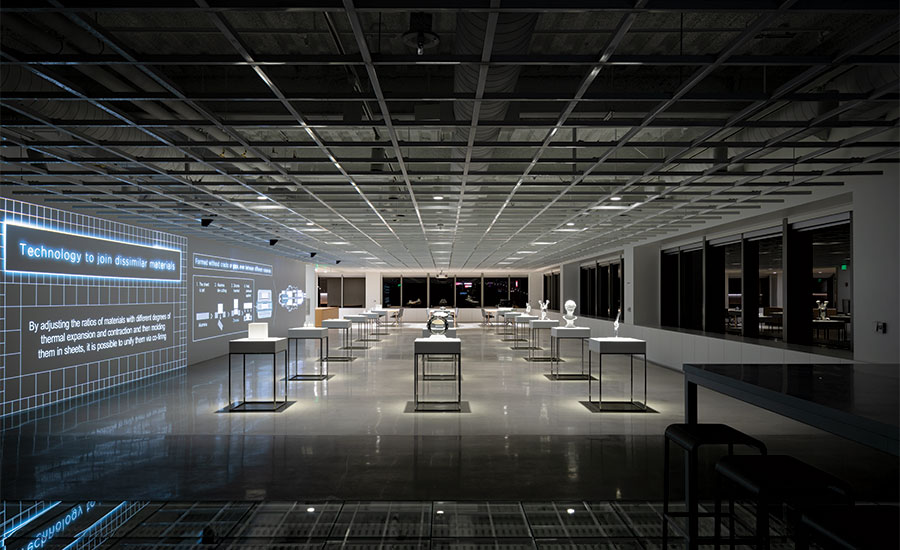

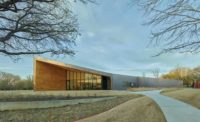
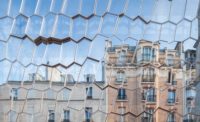
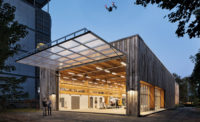
Post a comment to this article
Report Abusive Comment